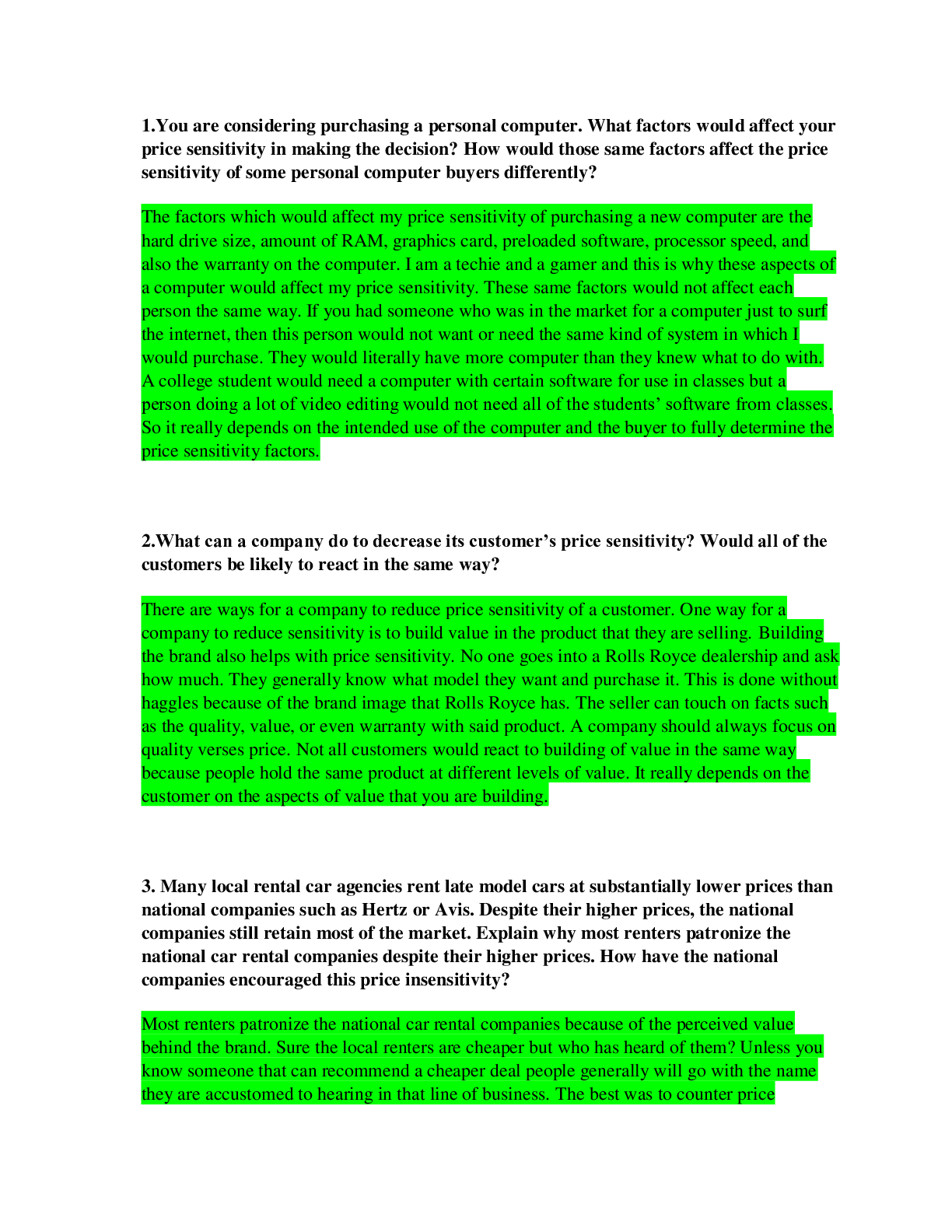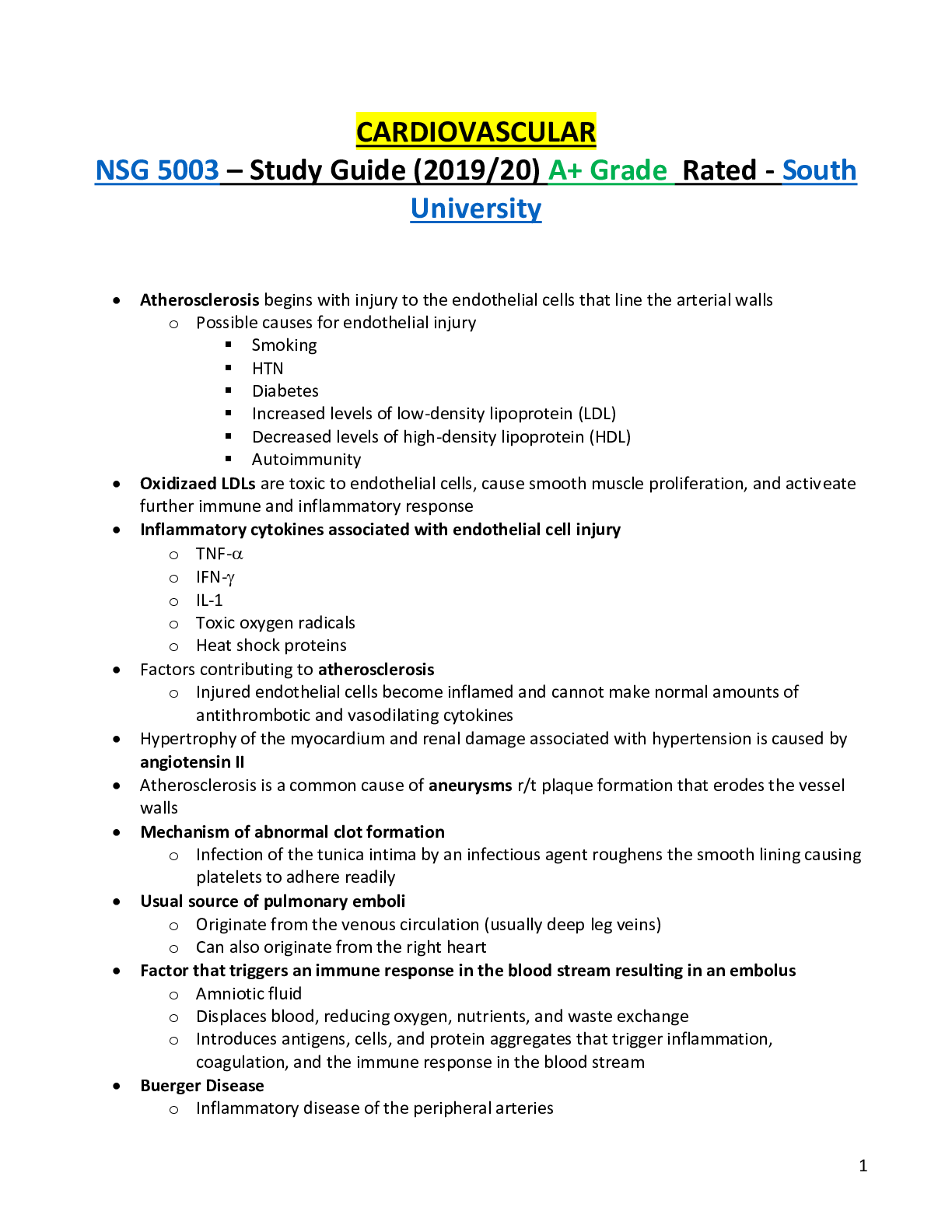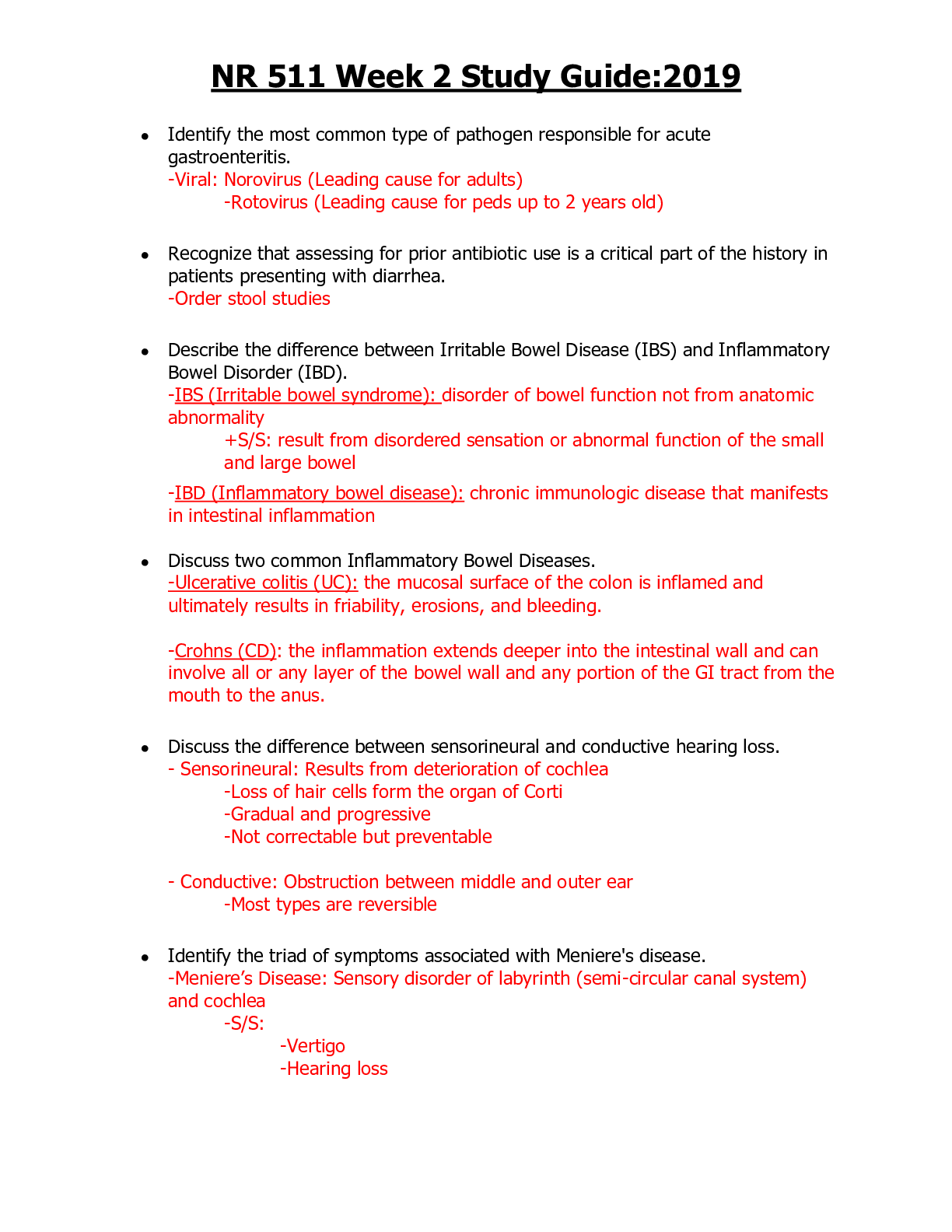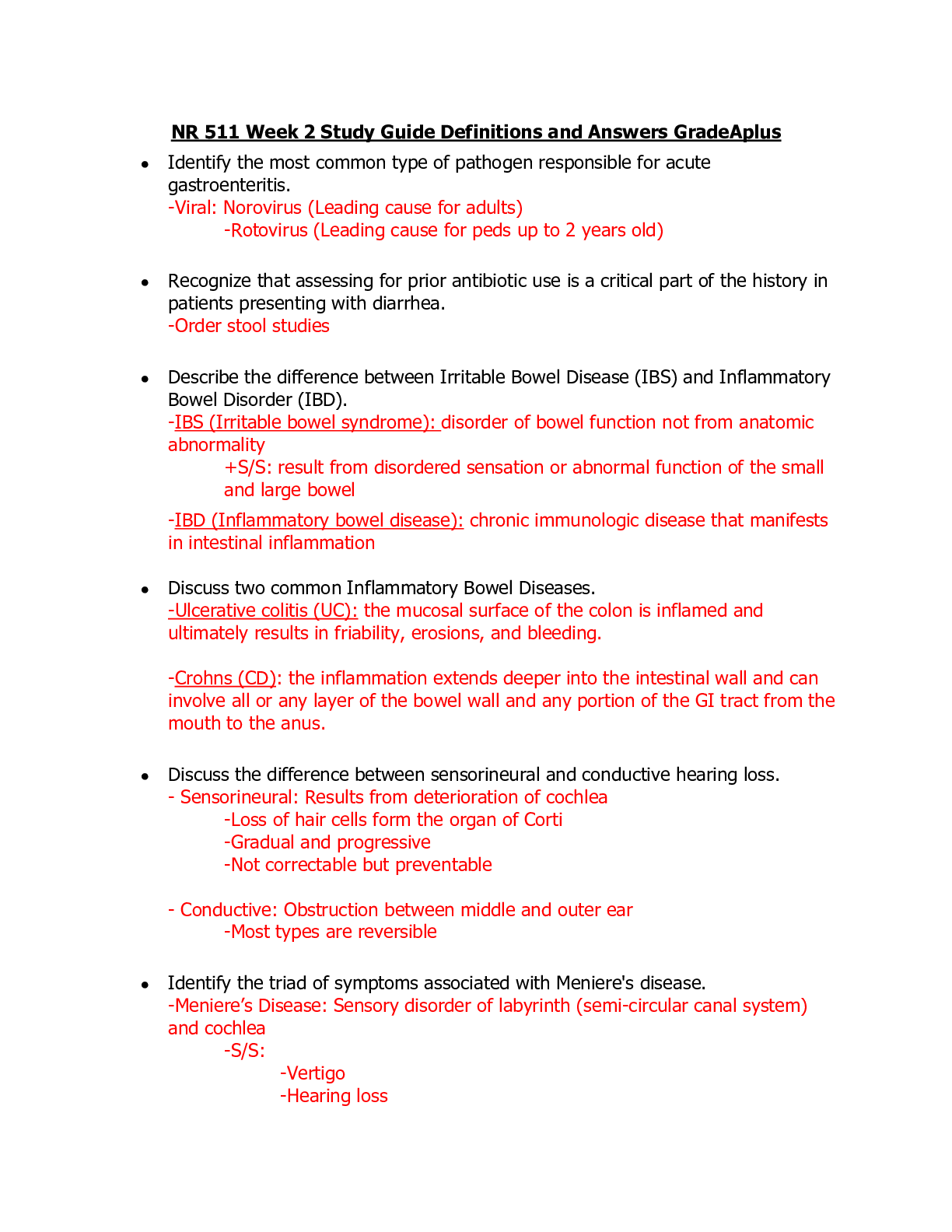Health Care > EXAM > Foundations review - HESI Fundamentals Study Guide mental health (Gwinnett Technical College) (All)
Foundations review - HESI Fundamentals Study Guide mental health (Gwinnett Technical College)
Document Content and Description Below
Foundations review - HESI Fundamentals Study Guide mental health (Gwinnett Technical College) Foundations HESI Review (from 9th ed. of Foundations text) Read all of chapters 1 and 2 in HESI book... !!! Study this information for ALL HESI exams! Basic Nursing Skills – Vital Signs – Chapter 30 ● BP cuff size (review what happens with wrong cuff size) o False-high diastolic readings on BP cuf ● Deflating cuf to slowly, inflating to slowly o False-low readings on BP ▪ Cuf to wide, arm above heart level o False-high readings on BP ▪ Cuf to narrow/short, cuf to loose or uneven, arm not supported o (When arterial pulsations too weak to detect Korotkoff sounds or to identify auscultatory gap). Box 30-9, p. 508. Palpate radial pulse. Inflate cuff 30 mmHg above point at which you can no longer palpate the pulse. Slowly release valve and deflate cuff… See documentation guidelines, as well. ● Technique for taking BP in the leg – o Popliteal artery. ▪ SBP usually 10-40 mmHg higher than using brachial. ● DBP remains same. Ch. 30, p. 508. o orthostatic hypotension also called postural hypotension; ▪ obtain supine, sitting, and standing (1-3 minutes between each); ▪ observe pt. for dizziness, fainting, lightheadedness. ▪ Record pts. position with each reading (remember pt. safety); ▪ don’t delegate this. ● Note when you should take postural hypotension readings. o RR: 12-20 o BP:<120/<80 o HR: 60-100 o Temp: 98.6F or 37C o Pain 5th vital sign Vital Signs – Guidelines ● Nurse ultimately responsible for vitals but can be delegated in stable patients, ● RN to interpret their significance and make decision about interventions; ● Determine equipment functional and appropriate; o Know pt normal vitals; ● Know history, therapies and meds that could afect vitals; ● Control environmental factor that could afect vitals; o Be organized and use systematic approach to ensure accuracy; o Use vitals to determine indications for med administration; ● Analyze measurements; communicate changes to HCP; ● Advise pt and or pt family of results. ● What is a pulse deficit? What do you do if you detect a pulse deficit during your assessment? o See Clinical Decision (If pulse is irregular do an apical/radical pulse assessment to detect a pulse deficit. Count apical pulse help patient to supine position or sitting position move aside bed linen and gown to expose sternum and let side of chest. While a colleague counts radial pulse begin apical pulse count out load to simultaneously assess pulses. If pulse differs by more than 2 a pulse deficit exists which sometimes indicates alternation in cardiac output.). o What if pulse deficit is in lower extremities? Pedal pulse weak on one side? ▪ Assess next pulse up, e.g., posterior tibial. ▪ If that pulse is weak, move up to popliteal, etc. ▪ Compare one extremity to the other. [Show More]
Last updated: 2 years ago
Preview 1 out of 19 pages
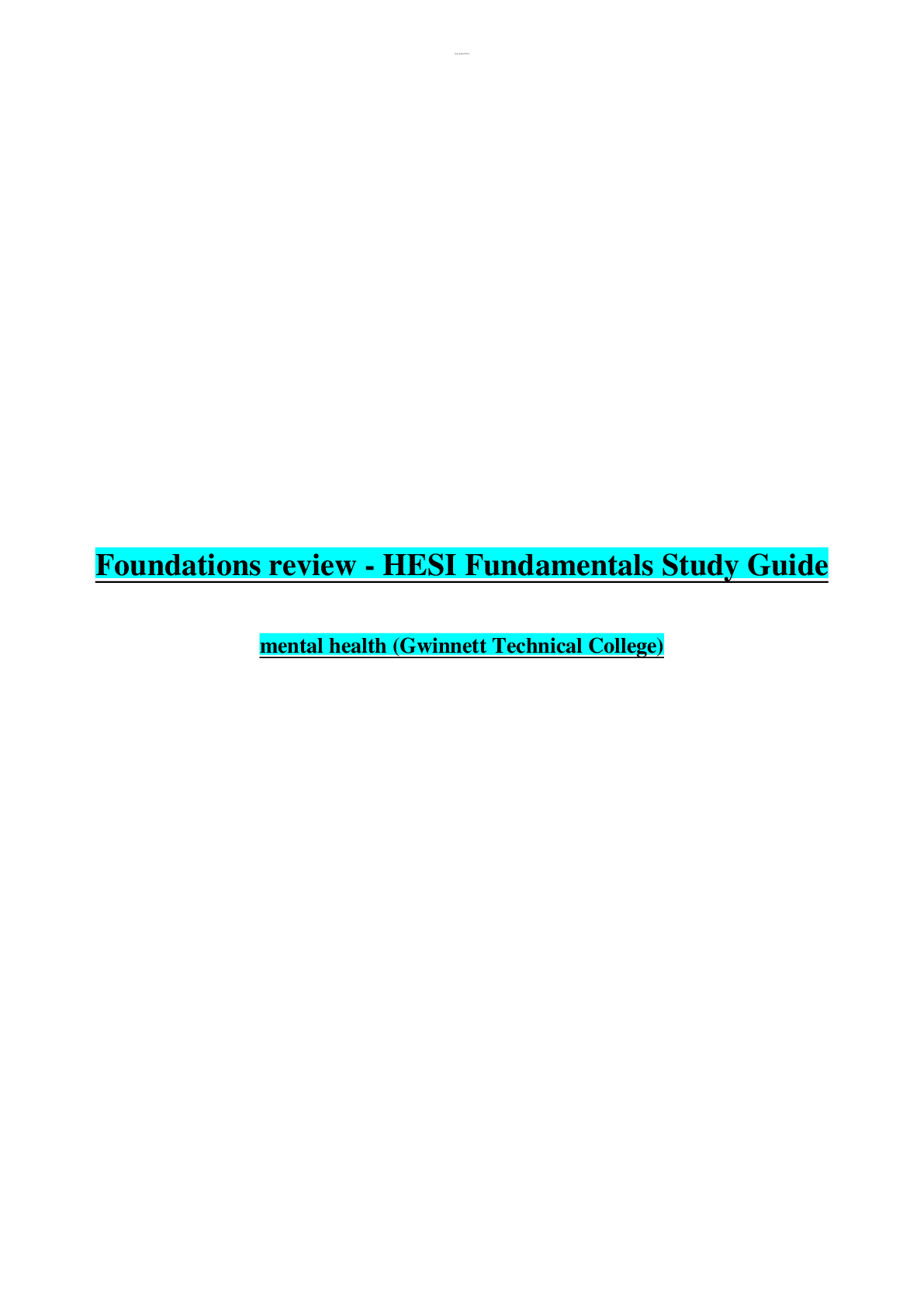
Buy this document to get the full access instantly
Instant Download Access after purchase
Buy NowInstant download
We Accept:

Reviews( 0 )
$15.00
Can't find what you want? Try our AI powered Search
Document information
Connected school, study & course
About the document
Uploaded On
Jun 11, 2022
Number of pages
19
Written in
Additional information
This document has been written for:
Uploaded
Jun 11, 2022
Downloads
0
Views
77


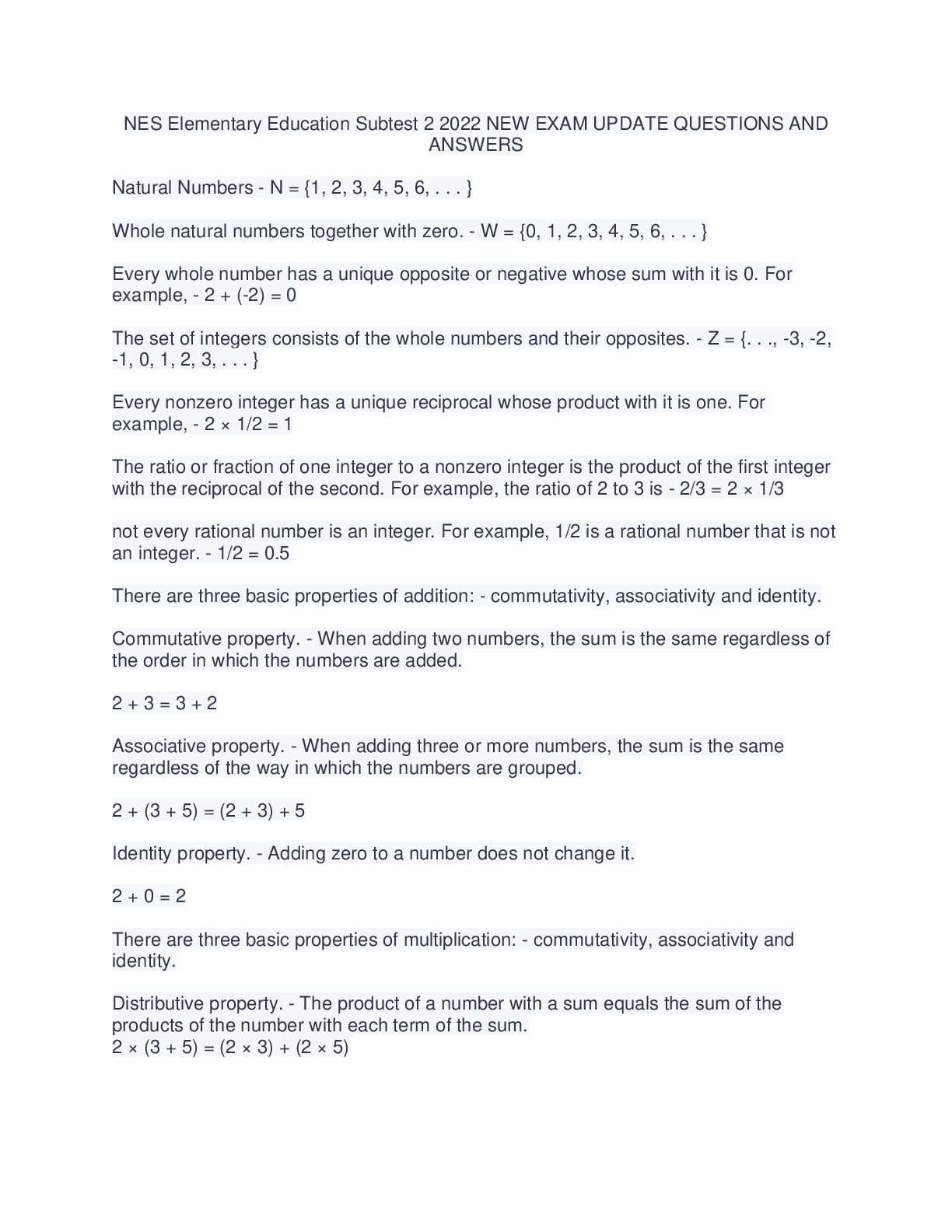
.png)

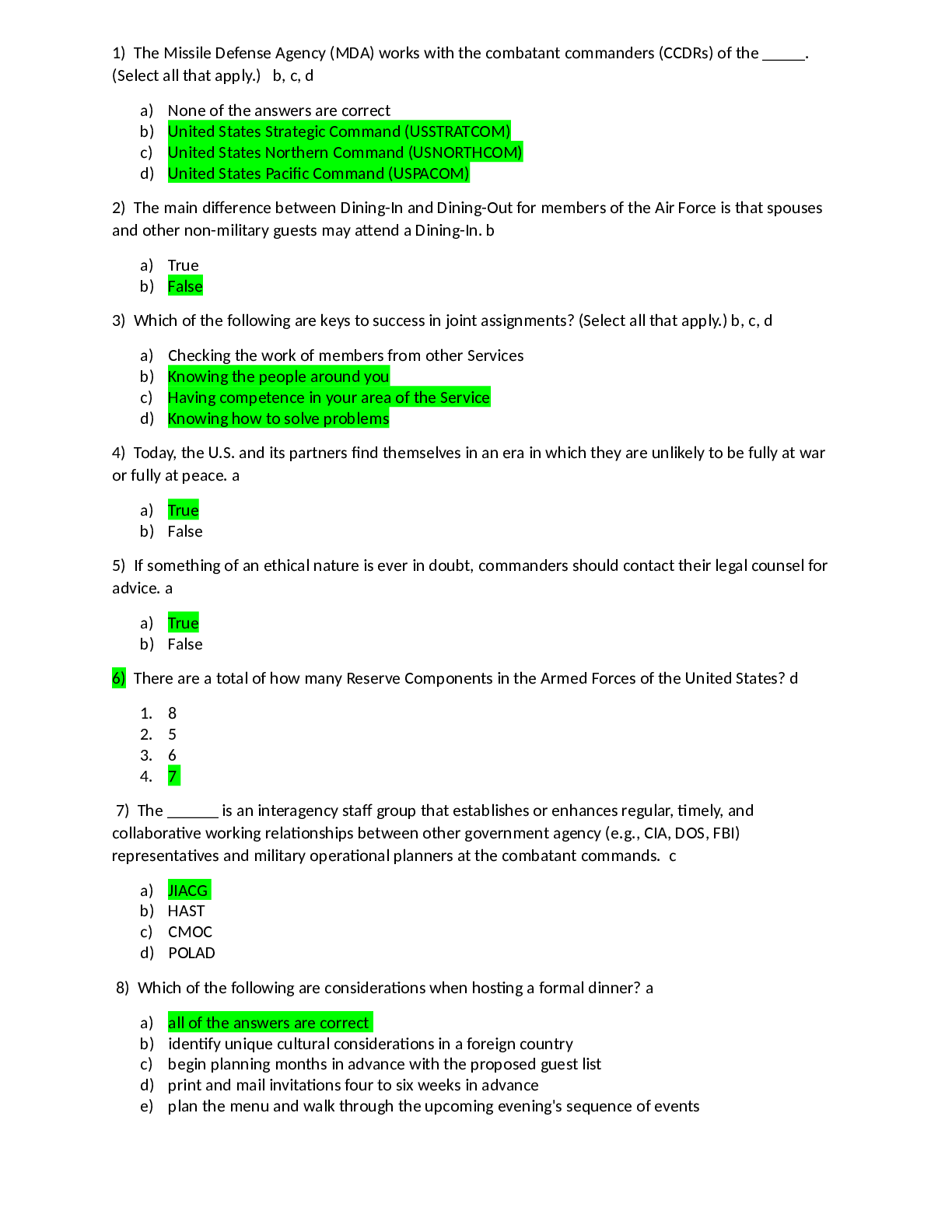
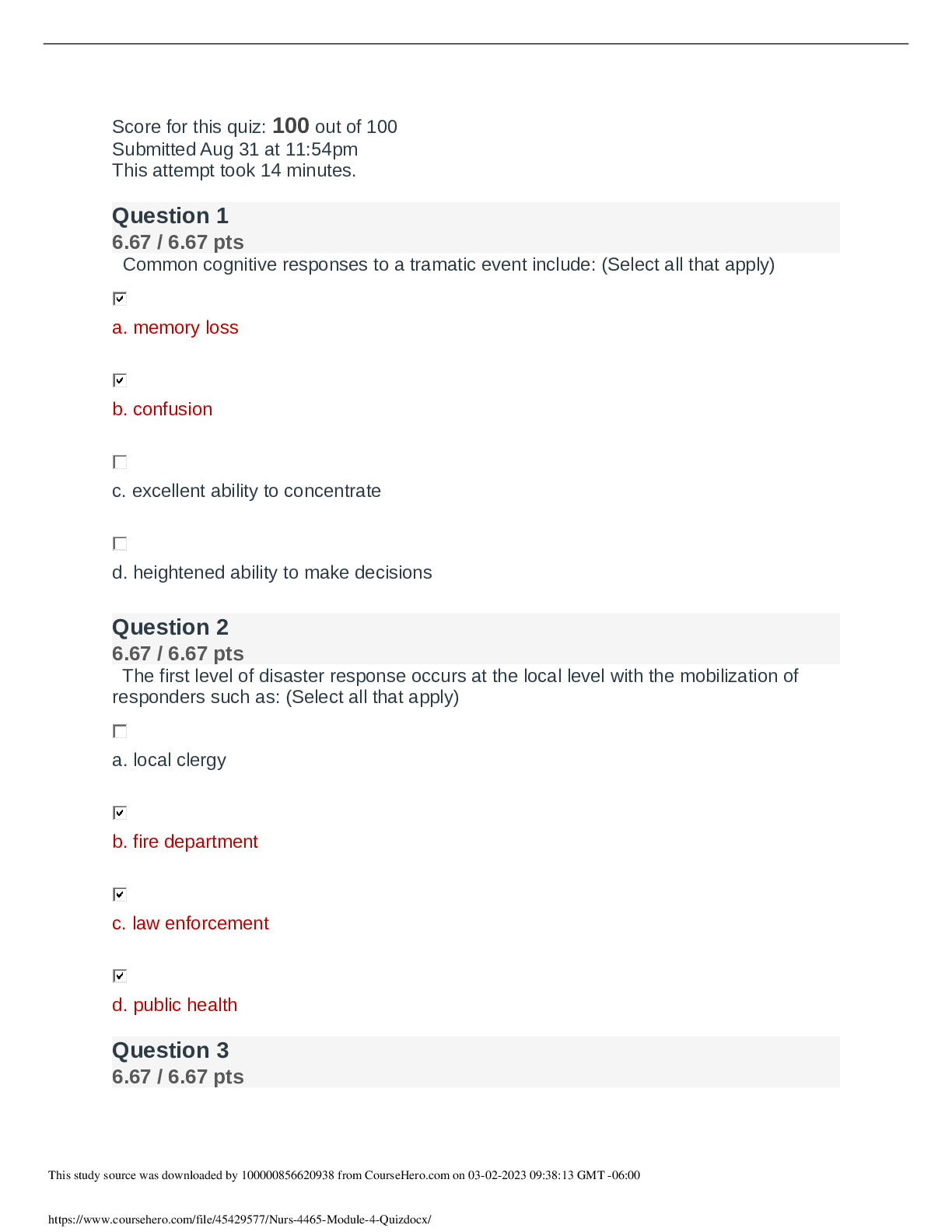
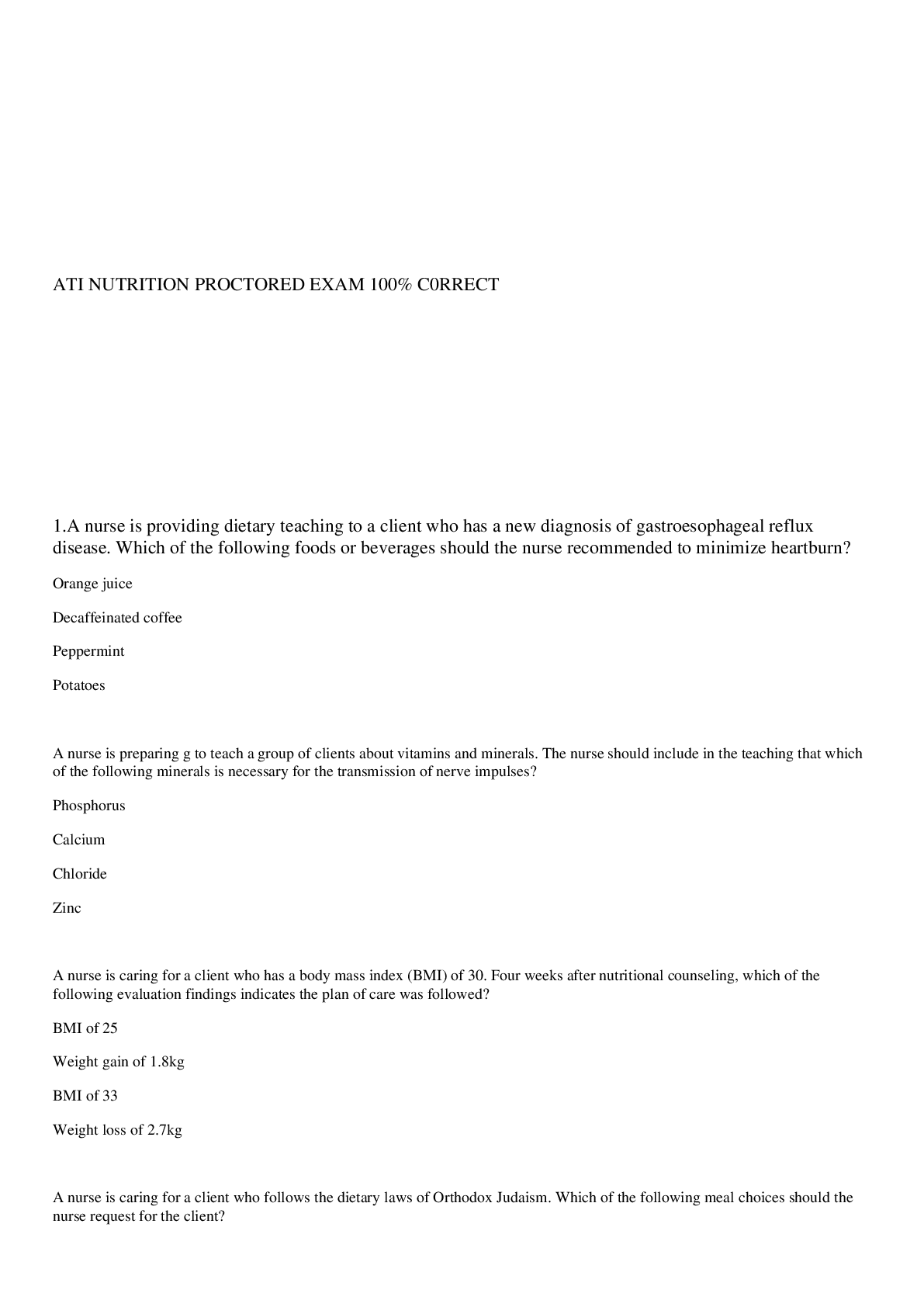
.png)
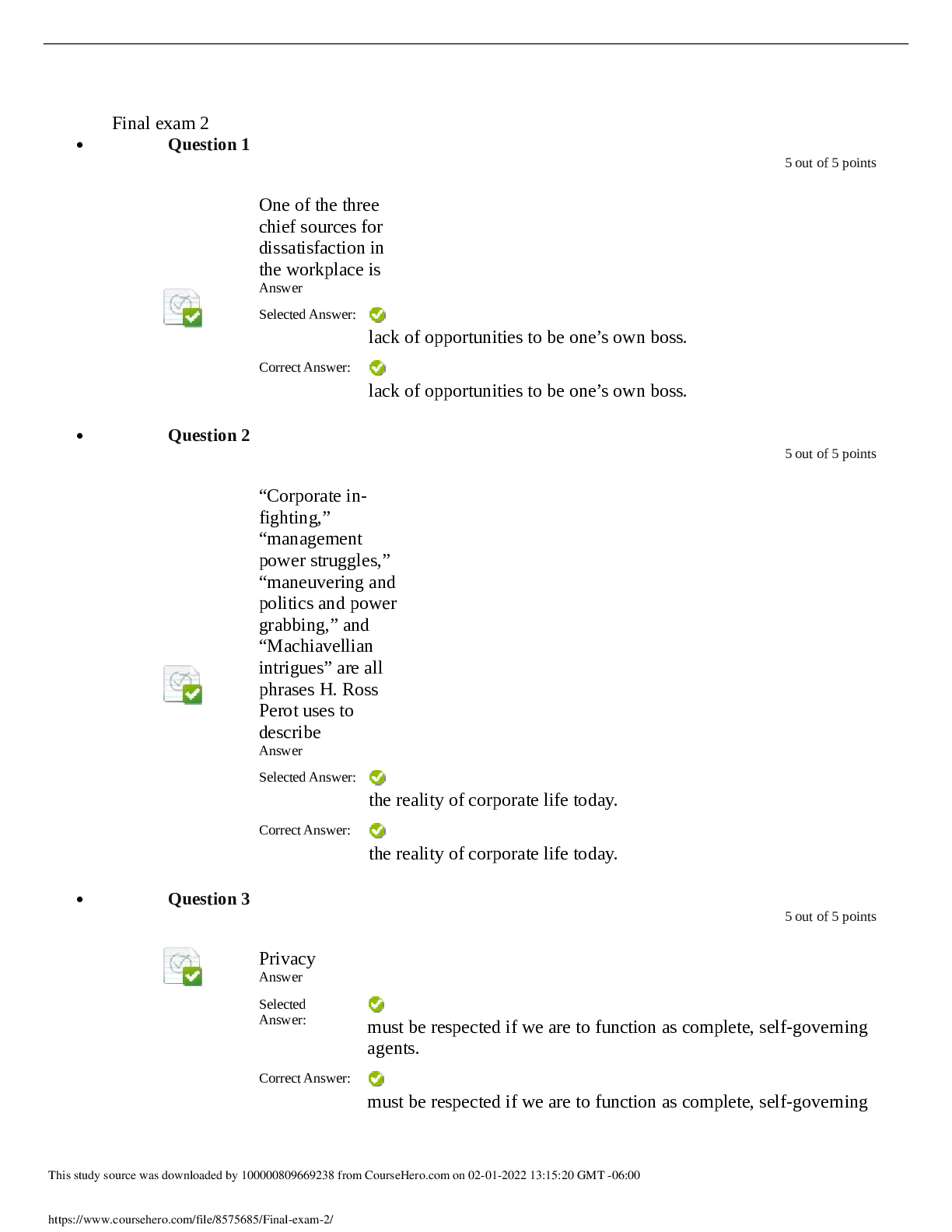
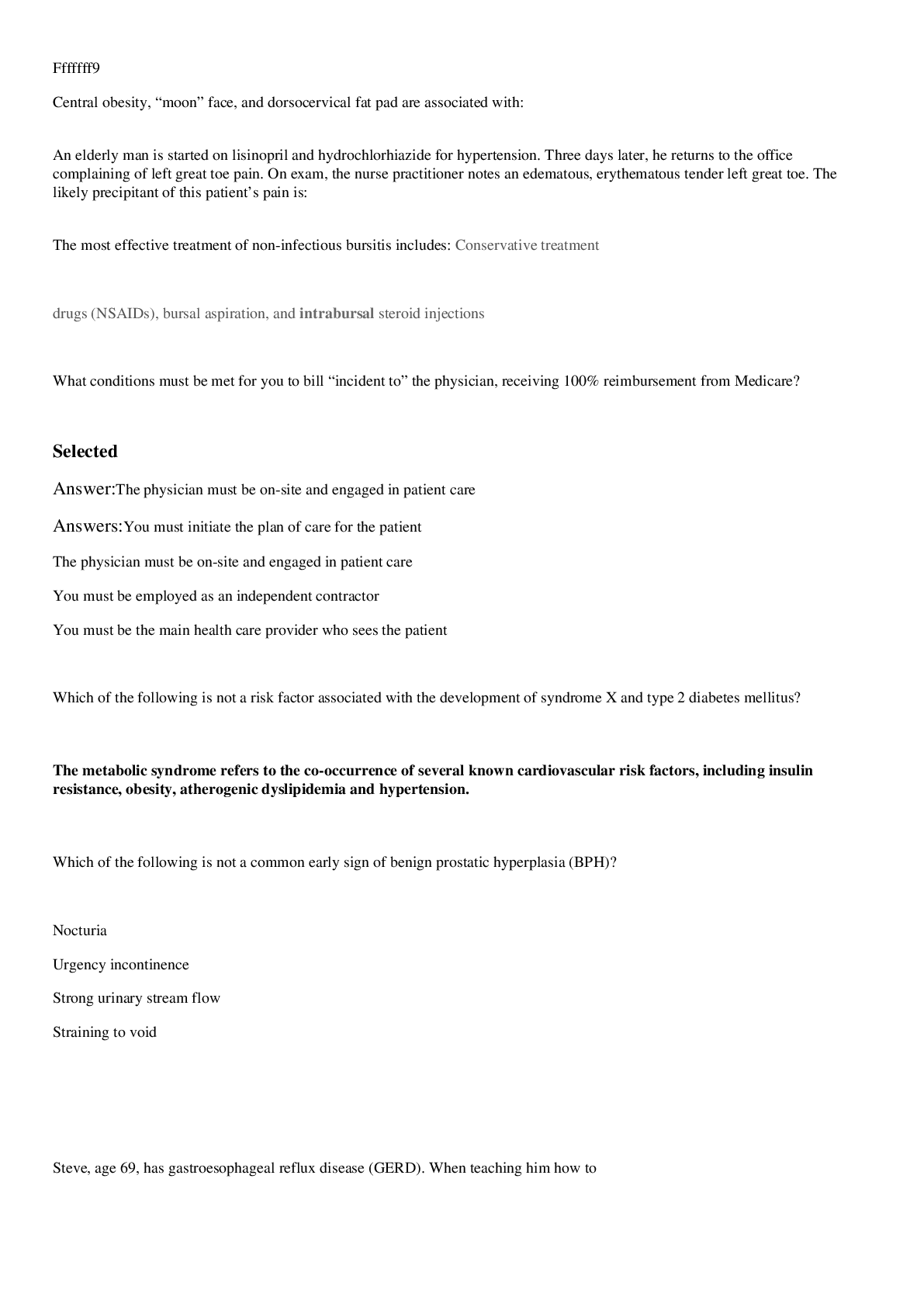
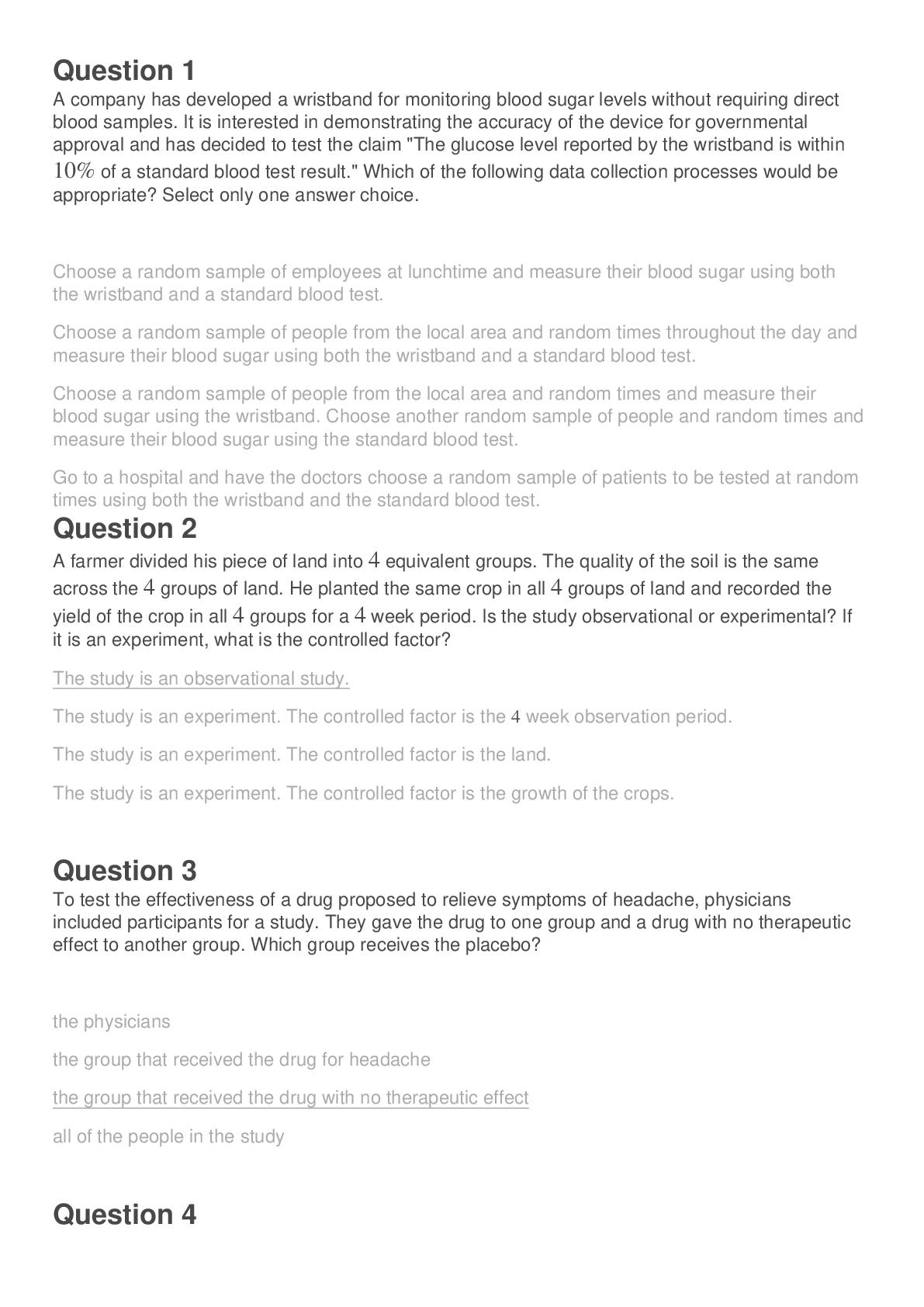
.png)
